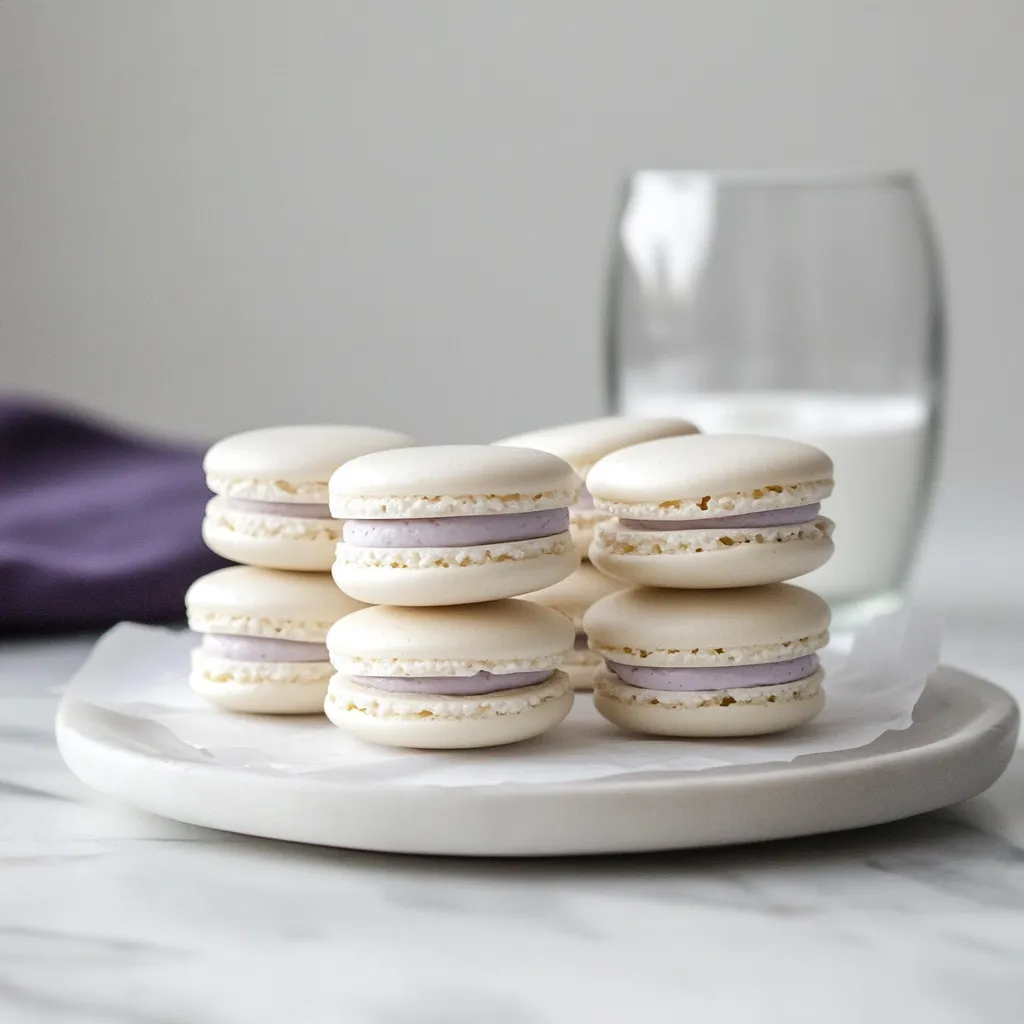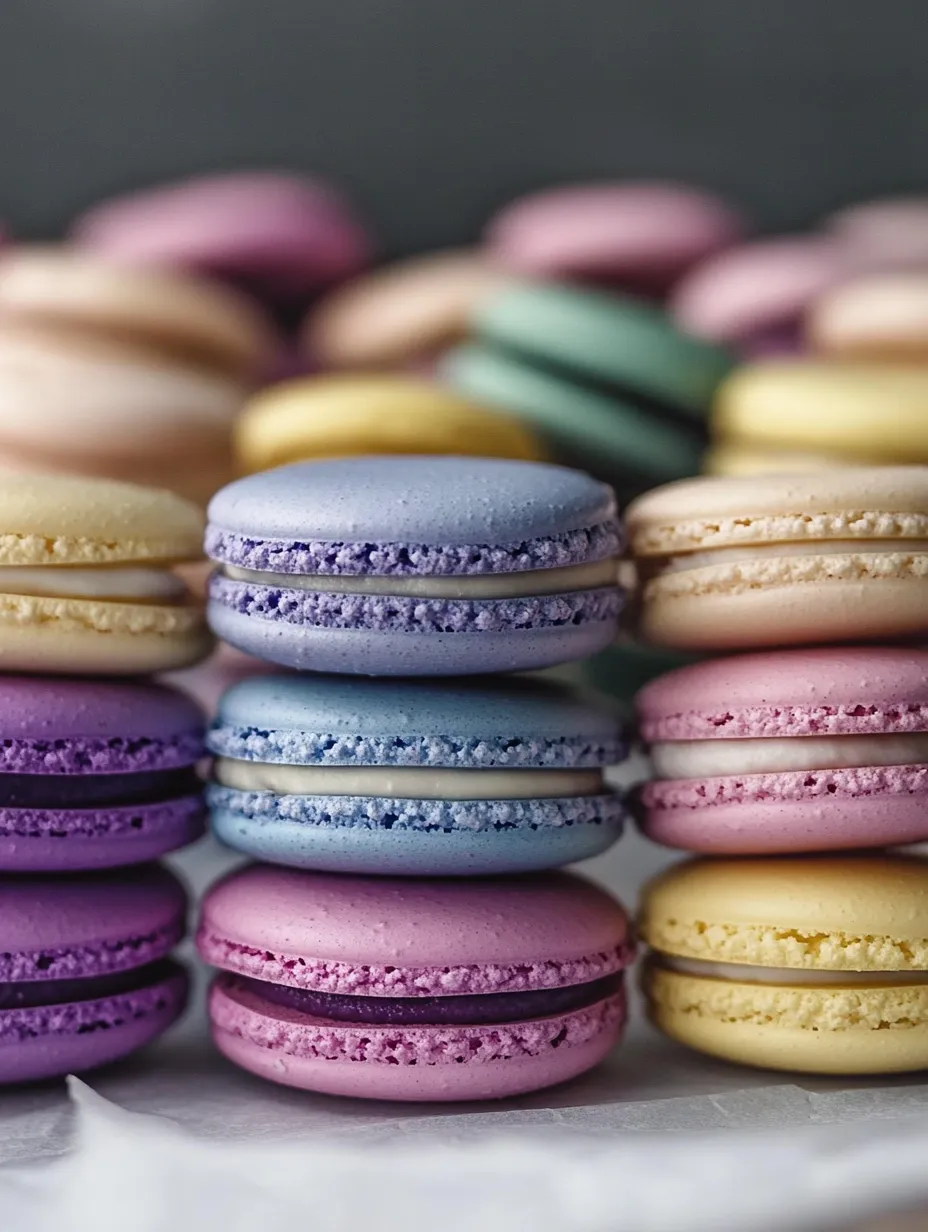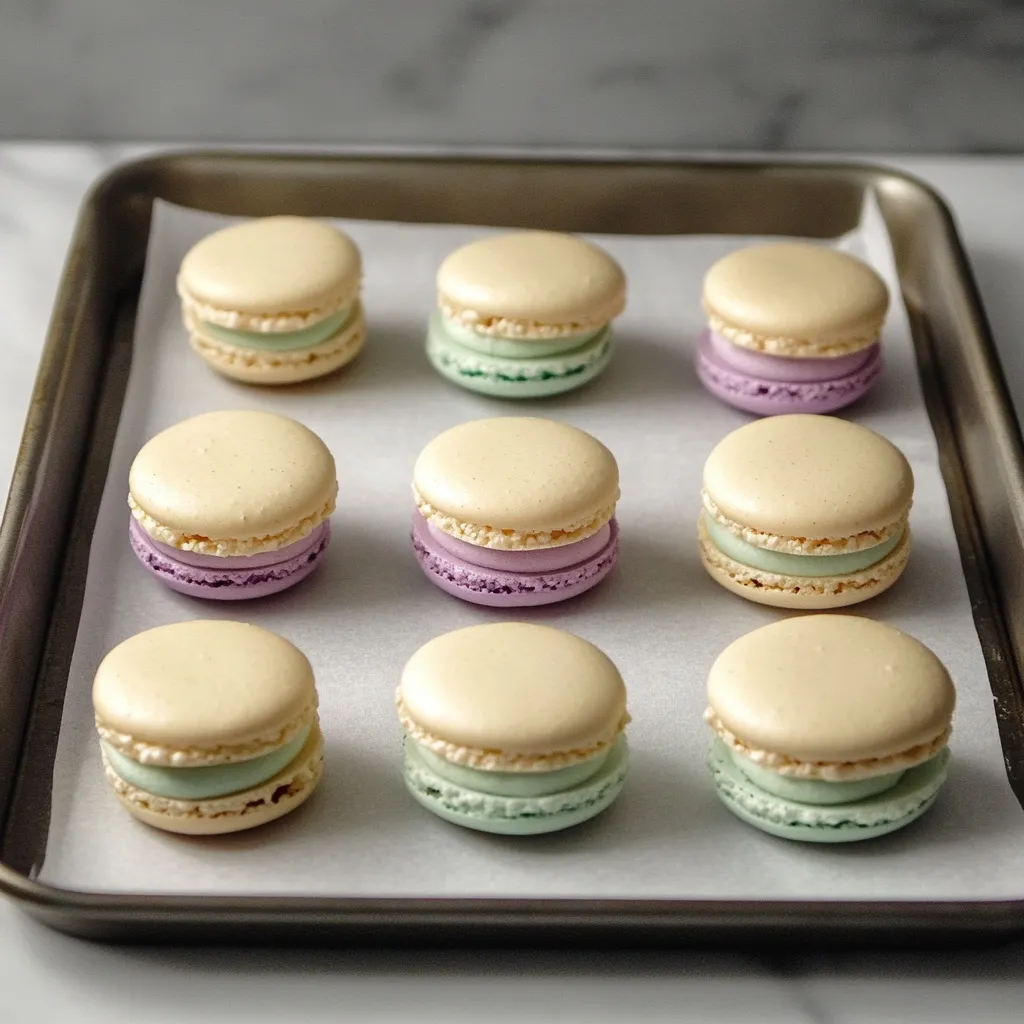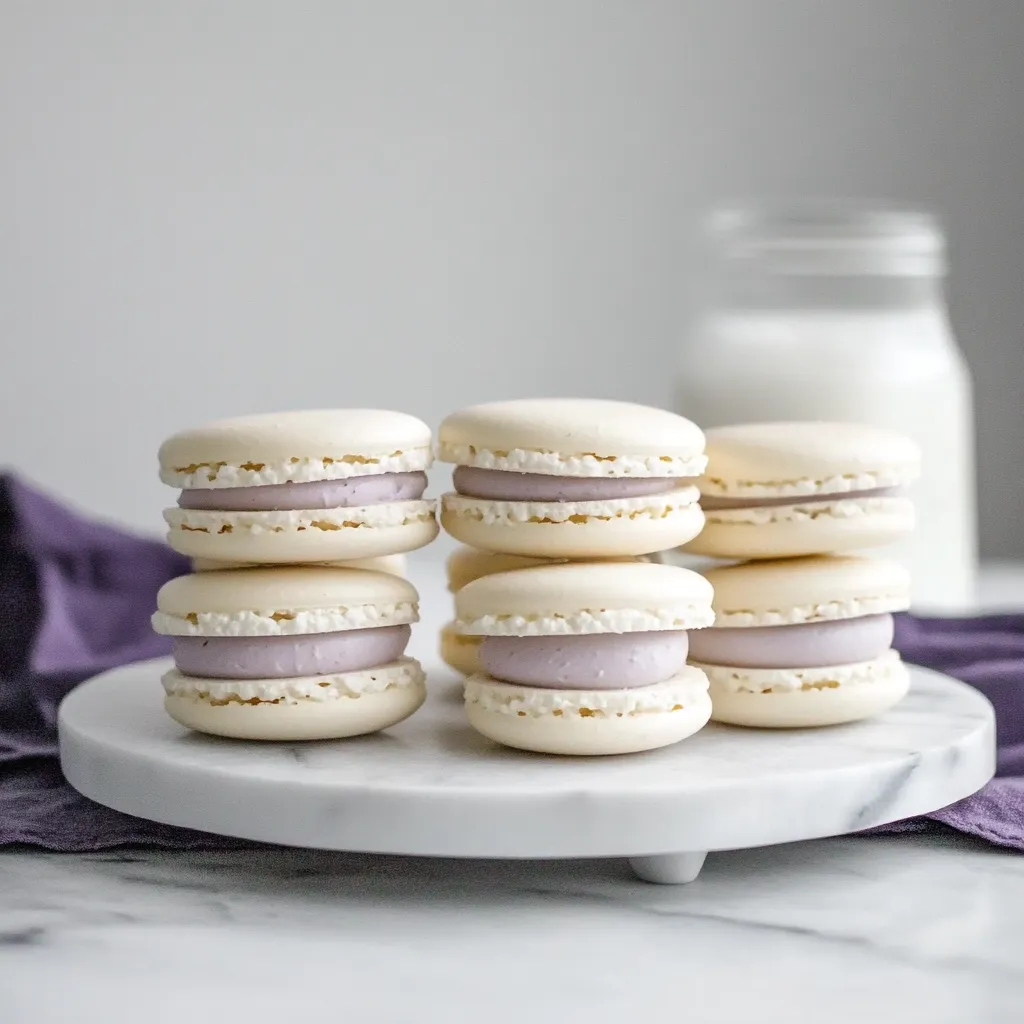 Pin it
Pin it
Whipping up macarons blends exact science with creative flair, turning basic items into dainty, gem-like treats that showcase the best of French baking. They might look scary at first, but once you get the key methods and basics down, these fancy cookies become totally doable for anyone at home who's willing to practice and watch the little details.
After trying batch after batch and learning tons along the way, I've found that getting macarons right comes from knowing both what to do and why you're doing it. I still remember my first perfect batch - those smooth domes, cute frilly bottoms, and soft centers - it happened because I finally got how all the parts work together.
Key Components
- Almond flour: Needs to be ultra-fine and not old - keep it in your freezer so it doesn't go bad
- Egg whites: Make sure they're at room temp and have sat out for 1-2 days
- Granulated sugar: Should be really fine for the best meringue
- Powdered sugar: Must be sifted and not clumpy
- Food coloring: Only use gel or powder types to keep the wetness level right
 Pin it
Pin it
Detailed Preparation Guide
- Step 1:
- Get everything ready first - measure and sift all your stuff before you start. You need to be exact, so grab a digital scale for this job.
- Step 2:
- Let your egg whites sit out by separating them 1-2 days ahead and keeping them covered at room temp. This cuts down moisture and makes the proteins stronger.
- Step 3:
- Run your almond flour and powdered sugar through a sieve three times, and toss any big bits. This makes your shells totally smooth.
- Step 4:
- In a super clean bowl, beat your room temp egg whites with a tiny bit of salt until they get foamy. Any bit of grease will mess up your meringue.
- Step 5:
- Slowly add your fine sugar while you keep beating. Your meringue should form firm, shiny peaks that stay up when you lift the beater.
- Step 6:
- Now's when you add any colors or flavors to your meringue. Just know the color will look a bit lighter after baking.
- Step 7:
- Start the folding process by adding your dry mix to the meringue in three batches. This step pretty much decides your final texture.
- Step 8:
- Keep folding until your mix flows like thick lava and makes a ribbon that sinks back into the batter in about 20-30 seconds.
 Pin it
Pin it
The first time I tried making macarons, I quickly found out that hurrying any part leads to sad results. Now I get that every fold of the batter, every minute they rest, plays a specific role in creating these delicate treats.
Perfecting Your Folding Technique
After lots of testing, I can tell you getting the batter just right is everything: Keep track of your folds. Watch how the mix changes. Check the flow often. Know when to stop.
Important Heat Checkpoints
Getting things right means watching temps carefully: Use ingredients at room temp. Keep your oven steady. Let them cool properly. Store at the right temperature.
Fixing Common Problems
Fast fixes for usual issues: Empty shells? Check your oven temp. No feet? Didn't rest long enough. Cracked tops? Too much air in the mix. Wonky sizes? Try using a guide underneath.
Next-Level Methods
When you're ready to try harder stuff: Swirled colors in one shell. Brushed-on designs. Fancy top patterns. Different shapes beyond circles.
Time Makes Them Better
Great macarons need: Egg whites left out (1-2 days). Proper resting before baking (30-60 mins). Setting time after filling (1-2 days). Warming up before eating.
After making macarons for years, I've discovered that doing well means knowing the science behind each step while also bringing some creativity to the process. Whether it's your first try or your hundredth, you'll learn something new about these amazing cookies every time.
Chemistry Behind Beautiful Shells
Knowing the science leads to better cookies: How proteins work in egg whites. What sugar does as it cooks. Balancing moisture levels. How temperature shapes your results.
Creating Perfect Colors
Making beautiful shades means knowing: Why colors lighten during baking. How much gel coloring to use. Ways to blend colors. Options for natural colorings.
Tweaks for Different Settings
Making changes based on your situation: Ways to handle dampness. Adjustments for high elevations. Changes between summer and winter. Controlling your kitchen setup.
Unique Flavor Combos
Interesting taste pairings: Honey with lavender notes. White chocolate mixed with matcha. Coffee with salted caramel. Earl grey tea blends.
Making Them Look Amazing
 Pin it
Pin it
Display tricks from the pros: Arranging colors from light to dark. Varying heights when serving. Creating patterns on plates. Pretty packaging ideas.
Modern Macaron Styles
Current popular looks: Space-inspired designs. Soft watercolor effects. Shiny metallic touches. Cute character shapes.
After baking countless batches and teaching so many others, I've come to think of macarons as more than just cookies - they're where exact measurements meet artistic freedom, precision meets creativity. Every batch gives you a chance to get better while trying something new.
Frequently Asked Questions
- → Why let them sit before baking?
- When left to rest, a thin dry layer forms on the cookies, helping smooth tops and those ruffled edges bake perfectly.
- → Is regular food coloring okay?
- Stick to gel or powder coloring. Liquid ones can mess up the batter's texture.
- → How do I check if the meringue is right?
- It should hold its shape in stiff peaks. Flip the whisk over, and the peaks shouldn't droop.
- → What defines a great macaron?
- Smooth rounded tops, the trademark ruffled edges, crunchy shells, chewy insides, and no hollow spots.
- → Why bother sifting the flour?
- It gets rid of chunky bits, so your cookies come out smooth and bump-free.
